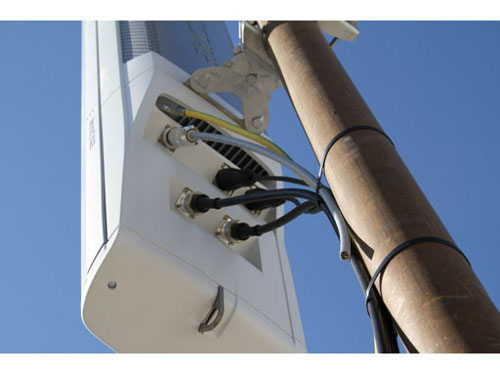To shrink cell sites, Ericsson unveils hybrid antenna/radio unit

Wireless telecommunications leader Ericsson today announced a new cellular radio solution called AIR (antenna integrated radio) which combines the radio unit with the antenna unit for simpler installation and integration into wireless networks, with the added bonus of decreased power consumption.
Generally speaking, the smaller a company can make their cell sites, the better. With smaller parts, more parts can be added, and obtaining permits and zoning clearance becomes just a little easier. This is an issue Ericsson has been confronting head on with its cell site equipment for the past few years.
"We are experiencing a tremendous take off in mobile broadband and the user expectations on speed and coverage are increasing the demands on the networks," said Ulf Ewaldsson, Vice President and head of Ericsson's Product Area Radio divison. "In order to cope with the future capacity demands, we have a clearly defined small cell strategy. I am proud to announce that the AIR architecture is the first stepping stone towards a heterogeneous network."
Ericsson says its field trials of AIR showed it could be integrated and installed into a traditional cell site up to 30% faster than other solutions due to the reduced number of connections it requires. Furthermore, the simplified cooling and reduced feeder loss resulted in a reduction of power consumption up to 42%. Each AIR unit supports multiple 2G and 3G wireless standards and converting to a new standard or frequency band requires a simple antenna swap.
